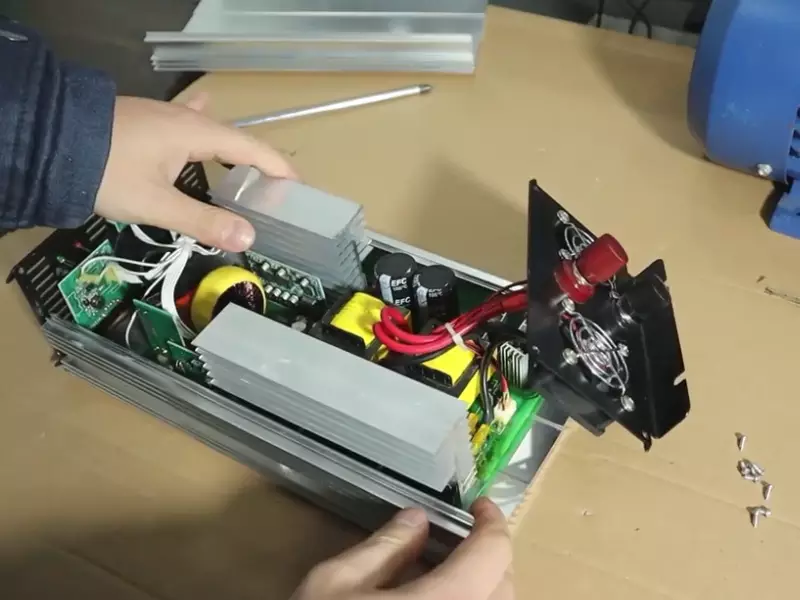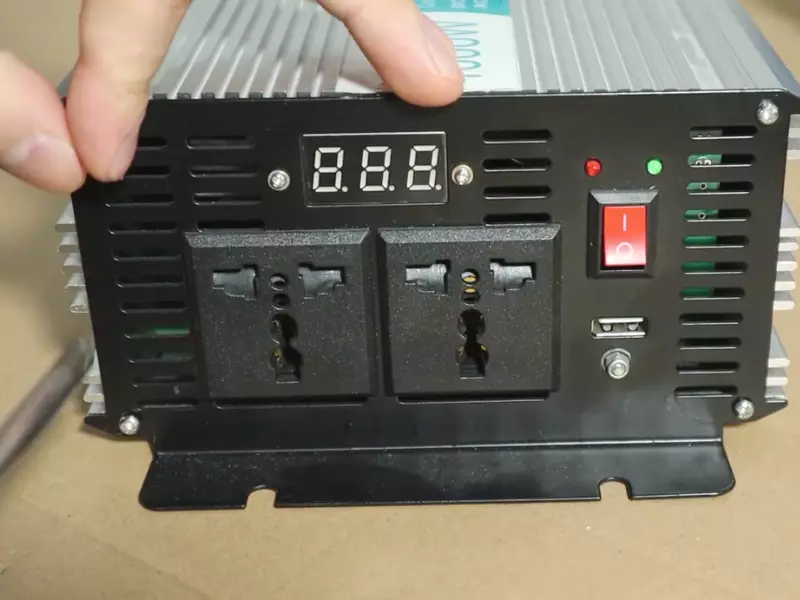Inverters have emerged as vital components in our daily lives, particularly with the increasing reliance on electronic appliances and the need for constant power supply. They play an indispensable role in maintaining the continuity of our daily routines, thus making it essential to understand their functionality and promptly address any issues.
Surprisingly, one common problem users encounter is the inverter not switching to mains power. In essence, this issue arises when the inverter, which should typically switch back to mains power once it’s available after a power cut, fails to do so. This malfunction could lead to prolonged usage of the battery, draining it, and eventually affecting the lifespan of the inverter.
To delve into this issue, we shall guide you through the intricate world of inverters, mains switching, and how to resolve this common problem. The information-packed journey offers practical solutions, comprehensive insights, and will help you maintain your inverter system in optimum working condition.
How Does a UPS Inverter Work?
Understanding the Basics
A UPS (Uninterrupted Power Supply) inverter is an electronic device designed to provide a constant power supply to the connected appliances in case of power cuts. It achieves this by storing energy in a battery when power is available and then using this stored energy to supply power when it isn’t.

Role in Maintaining Charge
The main role of a UPS inverter is to maintain charge. When the mains power is available, it charges the connected battery. During a power outage, it instantly switches to battery mode, ensuring no disruption in power supply to the connected appliances.
Dealing with Voltage Surge
A UPS inverter also handles voltage surges. Voltage surges can potentially damage electronic devices. To prevent this, a UPS inverter steps in and stabilizes the output voltage, protecting your devices from any potential damage.
Basic of Inverter and Mains Switching
Inverter and mains switching involves the changeover between mains power and battery power in an inverter system. The inverter, during normal operation, charges the battery from the mains power and switches to battery power during an outage. Once the mains power is restored, the inverter should ideally switch back from battery power to mains power.
Effective switching between battery power and mains power is crucial for maintaining the health of the battery and ensuring a constant power supply. However, there are instances when the inverter fails to switch back to mains power when it’s restored, leading to the issue we are discussing.
Role of Li-ion Batteries in Inverter Functioning
Li-ion batteries are a common choice for inverter systems due to their long life, high energy density, and minimal maintenance needs. These batteries are responsible for storing energy which the inverter uses during power outages.
However, issues such as over-discharging, overcharging, or even aging could affect Li-ion batteries, causing the inverter to malfunction. One such malfunction could be the inability to switch back to mains power, which strains the battery, causing it to deplete faster.
Rectifier Circuit in Inverters
The rectifier circuit in an inverter converts the incoming AC (Alternating Current) mains power into DC (Direct Current) power to charge the battery. Any issue with the rectifier circuit can result in problems like the inverter not charging the battery or not switching to mains power when it is restored.
Common Reasons for Inverter Not Switching to Mains
Faulty Circuitry
Faulty or damaged circuitry is one of the most common reasons why your inverter might not switch to mains. The circuitry includes components like the rectifier circuit, which, if faulty, can prevent the inverter from switching to mains.

Improper Configuration or Settings
Incorrect configuration or settings of your inverter can also lead to this problem. This could be due to wrong input voltage range settings, which cause the inverter to misinterpret the availability of mains power.
Damaged Switch
Physical damage to the inverter switch can prevent it from switching between battery power and mains power. The switch may get stuck, making it unable to respond to the presence of mains power.
Power Supply Issues
Inconsistent or fluctuating power supply can confuse the inverter, preventing it from switching to mains power.
Fuse Failure and Its Effects
Fuse failure in inverters can also cause this issue. The fuse acts as a safety device, preventing excessive current flow. If the fuse fails or blows, the inverter won’t switch to mains power.
Impact of Corrosion on Inverter Functionality
Corrosion on battery terminals or inverter connections can prevent the smooth functioning of the inverter. This corrosion can lead to poor conductivity and cause issues like the inverter not switching to mains power.
Fixing an Inverter Not Charging from Mains Power
Checking the Power Supply
Firstly, ensure that the power supply from the mains is consistent and within the acceptable range for your inverter. Use a multimeter to measure the voltage and check for any inconsistencies.
Inspecting the Circuit Breaker
The circuit breaker could be another cause of your inverter not switching to mains. Inspect the circuit breaker for any damages or issues.
Reviewing Inverter Settings
Review your inverter settings, especially the input voltage range. Adjust them to match your mains voltage if needed.
Verifying Physical Switch Condition
Examine the physical switch on your inverter. If it is stuck or damaged, consider getting it repaired or replaced.
Addressing Fuse Failure
Check the fuse in your inverter. If it has blown, you will need to replace it.
Dealing with Corrosion
Inspect the battery terminals and inverter connections for any signs of corrosion. Use a brush to clean them, and consider applying a corrosion inhibitor for long-term prevention.

Professional Solutions for Inverter Not Switching to Mains
If the problem persists despite your troubleshooting efforts, you may need professional assistance. This could involve:
Consulting a Qualified Electrician
An electrician or a professional technician can provide a comprehensive check of your inverter system and diagnose any hidden issues.
Servicing Your Inverter
Regular servicing can help prevent such problems. If your inverter is due for a service, consider scheduling one.
Replacing the Faulty Component
If a specific component of your inverter is faulty, replacing it could solve the problem. This should be done by a professional to avoid any further damage.
Buying a New Inverter
In some cases, it might be more cost-effective to buy a new inverter, especially if your current one is old and frequently causing problems.
Preventative Measures to Avoid Inverter Switching Issues
Regular Maintenance of Inverter
Regularly clean and service your inverter to ensure its smooth functioning.
Right Configuration and Settings
Ensure that your inverter’s configuration and settings match your power supply conditions.
Ensuring Steady Power Supply
Try to ensure a steady and consistent power supply to your inverter. This can help prevent issues related to power fluctuations.
Proper Handling and Operation
Handle your inverter carefully to avoid any physical damage. Also, operate it as per the manufacturer’s instructions.
FAQs
What should I do if my inverter is not switching to mains?
If your inverter is not switching to mains, you should first check the power supply, the physical condition of the inverter, and its settings. If the issue persists, seek professional help.
Why does my inverter not charge the battery when mains power is available?
Your inverter might not charge the battery if there’s an issue with the rectifier circuit, if the input voltage range is set incorrectly, or if there’s a problem with the power supply.
Can a faulty battery cause the inverter not to switch to mains?
Yes, a faulty battery can cause the inverter to malfunction, including not switching to mains. Regular maintenance of the battery can help prevent this.
Conclusion
Our exploration into the world of inverters and their intricate workings underlines the significance of their proper functioning. Understanding the reasons behind an inverter not switching to mains provides us with the knowledge to troubleshoot effectively and ensures our devices’ continuous operation.
Regular maintenance, correct configuration, and a steady power supply can prevent many of these issues. However, when in doubt, professional help is just a call away. With this knowledge, you are now equipped to handle the common inverter issue of not switching to mains power and ensuring a seamless power supply to your appliances.
